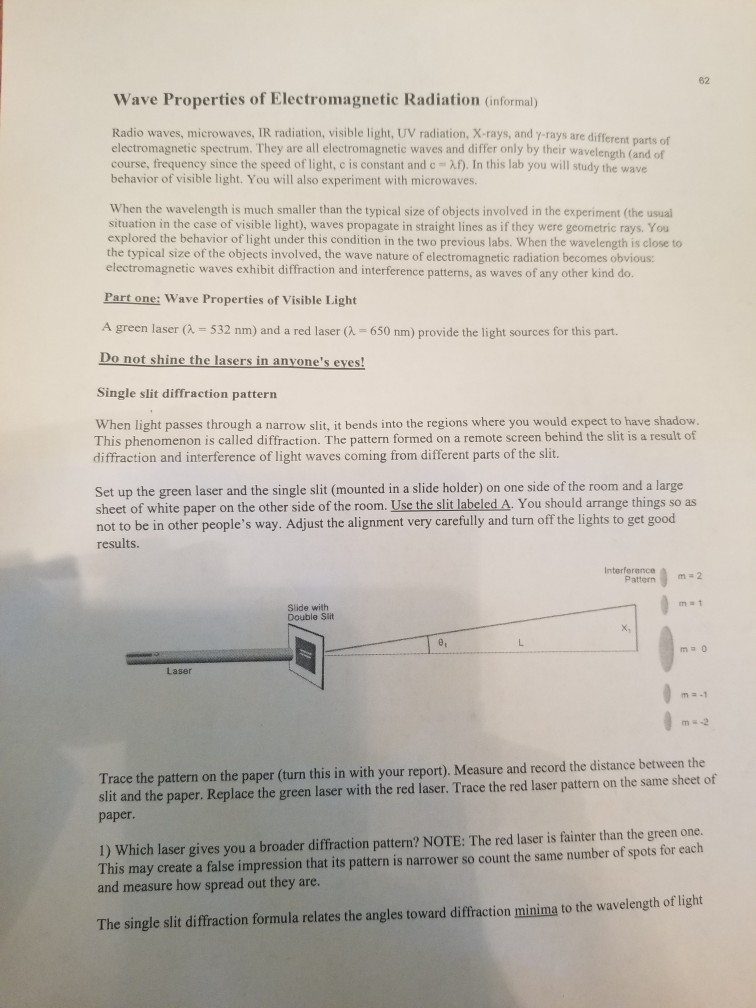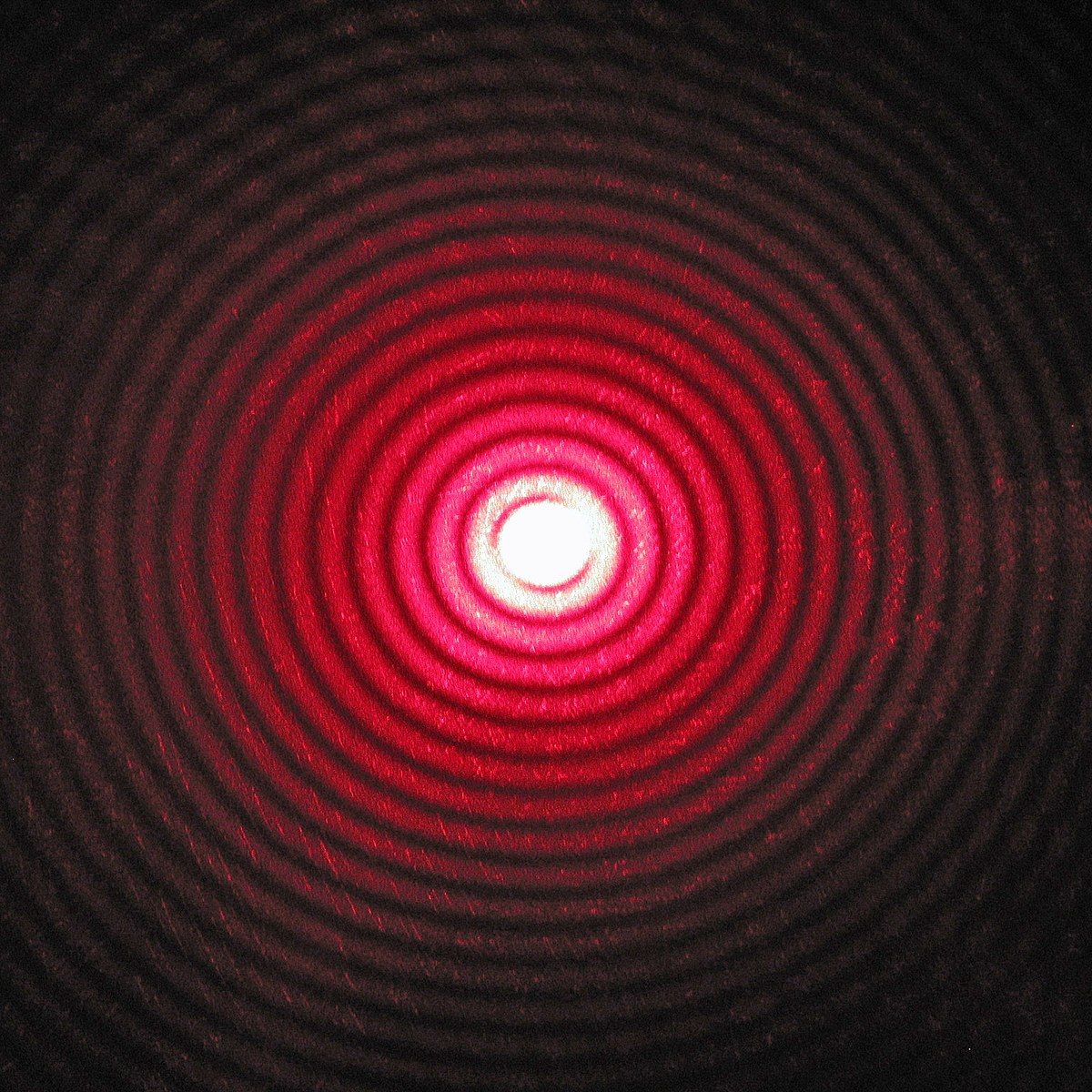Chase phone number auto loan. Physics » Introducing Electromagnetic Waves » Diffraction. To do 3 min read. One of the most interesting, and also very useful, properties of waves is diffraction. Definition: Diffraction. Diffraction is the ability of a wave to spread out in wavefronts as the wave passes through a small aperture or around a sharp edge. Electromagnetic radiation behaves like waves, so they exhibit diffraction. They are nonmechanical waves, which means that they can propagate through a vacuum. Diffraction can be observed when. Diffraction Radiation from Relativistic Particles Potylitsyn Springer 126: This book deals with diffraction radiation, which implies the boundary problems of electromagnetic radiati. In order to study the gravitational lens effect in detail this paper investigates the electromagnetic radiation generated by an electric dipole oscillating with high frequency in the Schwarzschild metric outside the horizon. Expressions for the Newman-Penrose tetrad components characterizing the radiation field are derived in a suitable approximation. The Poynting vector is discussed in the. The diffraction of electromagnetic radiation by a hole small compared with the wave-length is treated theoretically. A complete solution is found satisfying Maxwell's equations and the boundary.
The concept known as electromagnetic wave theory originated with the work of James Clerk Maxwell and Heinrich Hertz. According to the electric and magnetic equations postulated by Maxwell, electromagnetic fields resemble a wave in both structure and action. Electromagnetic waves coincide with the measurement of the speed of light, making light an electromagnetic wave itself.

Electric fields are spatially-varying and generate a magnetic field that is time-varying. Likewise, magnetic fields will do the same for electric fields, making the two concepts operate in unison. Together the two fields will oscillate and create an electromagnetic wave.


Electromagnetic Radiation Diffraction Chart
The physical properties of the electromagnetic wave theory take the form of electrodynamics. This facet of the theory means that any electromagnetic field present in the same space is considered a vector field, a wave with direction and length. As such, it can merge together with other vector fields. For example, when an electromagnetic wave impacts a molecule, the atoms within that molecule begin to oscillate, emitting their own electromagnetic waves, impacting the original wave. According to electromagnetic wave theory, this will cause refraction, a change in velocity, or diffraction, a change in wavelength.

Since light is a type of electromagnetic wave, the theory determines that the oscillation of light cannot be affected by other static electric or magnetic fields. However, interactions between certain exterior events, such as light traveling through a crystal, can have an effect. According to electromagnetic wave theory, magnetic fields impacting light will cause the Faraday effect and electric fields impacting light will cause the Kerr effect, a reduction of the speed of light waves.
Electromagnetic Radiation Diffraction
Frequency is a very important aspect of this theory. Oscillation of the wave is measured by hertz, the unit for frequency. One hertz is equal to one oscillation per second. When an electromagnetic wave, as in the case of light, creates waves at different frequencies, it is considered a spectrum.

Electric fields are spatially-varying and generate a magnetic field that is time-varying. Likewise, magnetic fields will do the same for electric fields, making the two concepts operate in unison. Together the two fields will oscillate and create an electromagnetic wave.
Electromagnetic Radiation Diffraction Chart
The physical properties of the electromagnetic wave theory take the form of electrodynamics. This facet of the theory means that any electromagnetic field present in the same space is considered a vector field, a wave with direction and length. As such, it can merge together with other vector fields. For example, when an electromagnetic wave impacts a molecule, the atoms within that molecule begin to oscillate, emitting their own electromagnetic waves, impacting the original wave. According to electromagnetic wave theory, this will cause refraction, a change in velocity, or diffraction, a change in wavelength.
Since light is a type of electromagnetic wave, the theory determines that the oscillation of light cannot be affected by other static electric or magnetic fields. However, interactions between certain exterior events, such as light traveling through a crystal, can have an effect. According to electromagnetic wave theory, magnetic fields impacting light will cause the Faraday effect and electric fields impacting light will cause the Kerr effect, a reduction of the speed of light waves.
Electromagnetic Radiation Diffraction
Frequency is a very important aspect of this theory. Oscillation of the wave is measured by hertz, the unit for frequency. One hertz is equal to one oscillation per second. When an electromagnetic wave, as in the case of light, creates waves at different frequencies, it is considered a spectrum.
Small particles of energy called photons are the basic units of electromagnetic radiation. As the photons travel, the wave follows and creates a frequency proportional to the particle. Photons are absorbed by atoms, which, in turn, excite electrons. When the electron reaches a high enough energy level, it escapes the positive attraction of the nucleus. If the electron energy level lowers, a photon of light is emitted.
The electromagnetic wave theory states that any acceleration of an electric charge or change in the magnetic field produces radiation. This radiation can come in the form of either a wave or a particle. Velocity, wavelength and frequency are the factors associated with waves. Particles contain individualized energy equal to the frequency. Regardless of the type, electromagnetic radiation travels at the speed of light in a vacuum. This fact prompted Albert Einstein to establish the theory of relativity.
